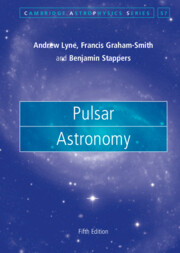Book contents
- Frontmatter
- Contents
- Preface
- Part I Discoveries and Techniques
- Part II Observed Physical Characteristics
- Part III Neutron Star Physics
- 13 Neutron Stars
- 14 Radius and Mass
- 15 Glitches, Timing Noise, Nudot Switching
- 16 Location and Geometry of Emitters
- 17 The Emission Mechanisms
- Part IV Environments and the Interstellar Medium
- References
- Index
14 - Radius and Mass
from Part III - Neutron Star Physics
Published online by Cambridge University Press: 21 July 2022
- Frontmatter
- Contents
- Preface
- Part I Discoveries and Techniques
- Part II Observed Physical Characteristics
- Part III Neutron Star Physics
- 13 Neutron Stars
- 14 Radius and Mass
- 15 Glitches, Timing Noise, Nudot Switching
- 16 Location and Geometry of Emitters
- 17 The Emission Mechanisms
- Part IV Environments and the Interstellar Medium
- References
- Index
Summary
Many of the masses of pulsars in binary systems are known to high accuracy from their dynamics, while the masses of solitary pulsars are difficult to obtain. Radii are available from x-ray luminosity where this is known to be thermal. This chapter assembles the known measurements of mass and radius for all neutron stars.
Keywords
- Type
- Chapter
- Information
- Pulsar Astronomy , pp. 226 - 234Publisher: Cambridge University PressPrint publication year: 2022

